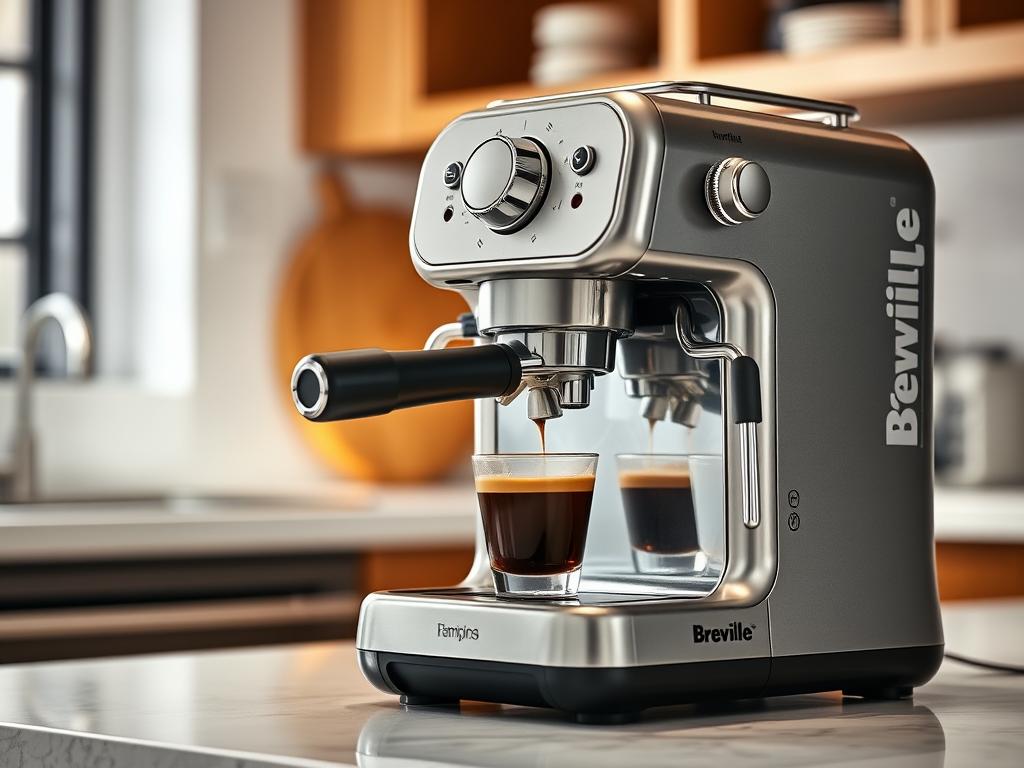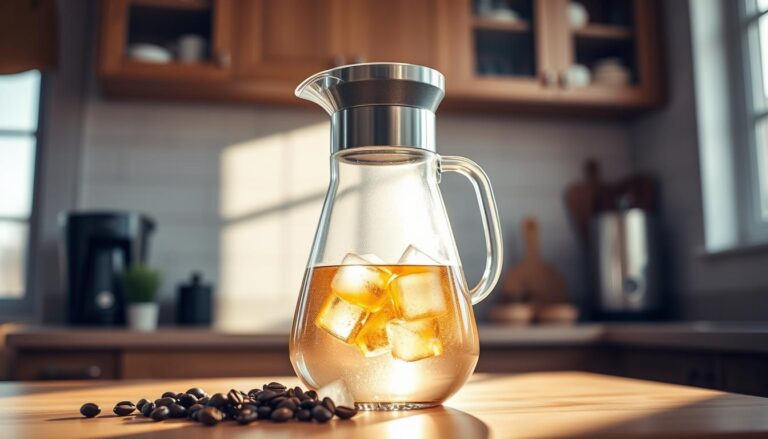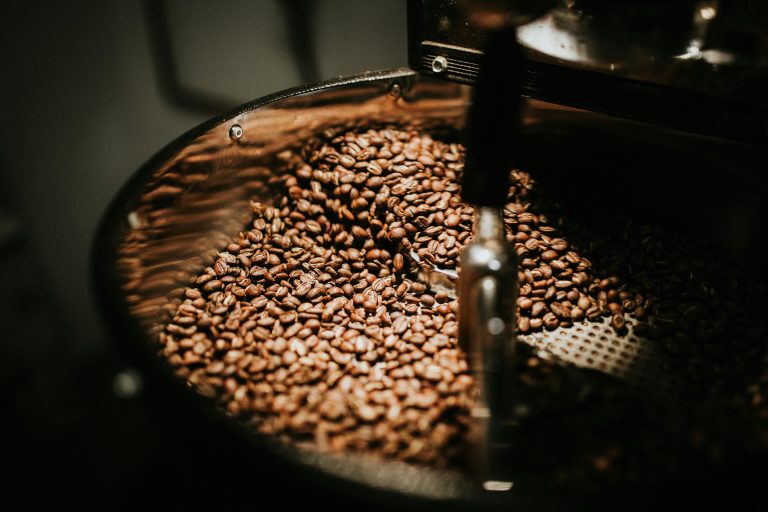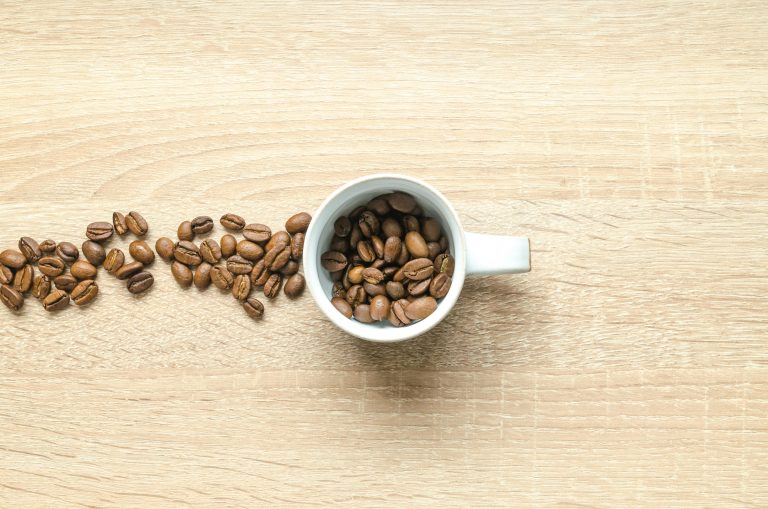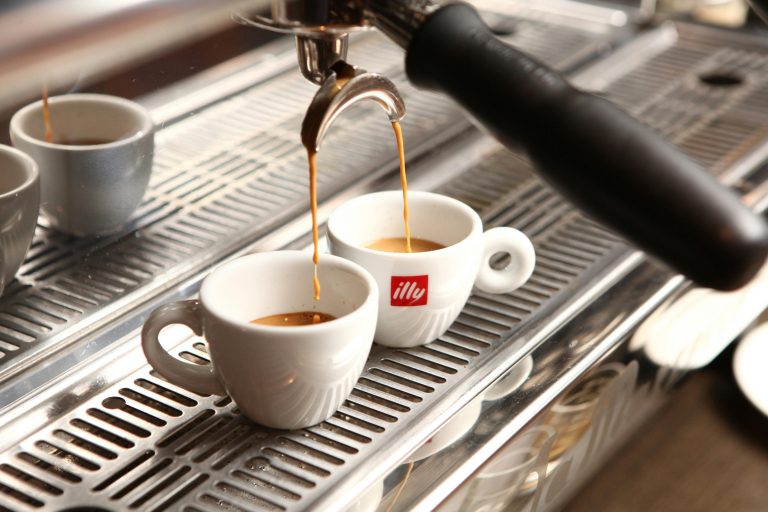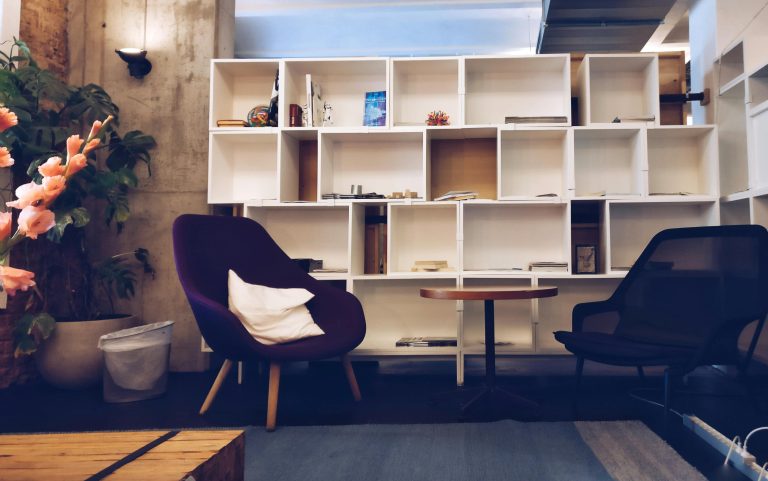Finding the best espresso machine under $1000 means striking that perfect balance between professional-grade features and reasonable cost. This price range represents the sweet spot where quality, durability, and performance meet without breaking the bank. Whether you’re upgrading from a basic model or diving into home espresso for the first time, these machines offer the capability to pull café-quality shots and create silky microfoam for your favorite milk-based drinks.
After testing dozens of models and consulting with coffee experts, we’ve compiled this comprehensive guide to help you navigate the options and find the perfect espresso machine for your home brewing journey. From single boilers to hybrid models with built-in grinders, we’ll explore the top contenders that deliver exceptional value in this competitive price range.
Our Top Pick: Breville Bambino Plus
The Breville Bambino Plus stands out as our top recommendation for most home baristas seeking the best espresso machine under $1000. This compact powerhouse delivers exceptional performance, combining user-friendly operation with professional-quality results. Its ThermoJet heating system reaches optimal temperature in just 3 seconds, while the automatic microfoam milk texturing system makes creating café-quality lattes and cappuccinos remarkably simple.
What truly sets the Bambino Plus apart is its ability to satisfy both beginners and experienced users. The pre-programmed settings make it accessible for newcomers, while the manual options provide room for experimentation as your skills develop. At around $500, it leaves room in your budget for a quality grinder—an essential companion for any espresso machine.
Pros
- Ultra-fast 3-second heat-up time
- Automatic milk texturing with adjustable temperature and texture
- Pre-infusion function for optimal extraction
- Compact footprint saves counter space
- Includes both pressurized and non-pressurized filter baskets
Cons
- No built-in grinder
- Limited temperature adjustment options
- Smaller water tank than some competitors
Espresso Machines Under $1000: Comparison Table
| Model | Price | Dimensions (inches) | Boiler Type | Built-in Grinder | PID Control | Milk System |
| Breville Bambino Plus | $499.95 | 7.7 x 12.6 x 12.2 | ThermoJet | No | Yes | Automatic |
| Gaggia Classic Pro | $449 | 9.5 x 8 x 14.2 | Single Boiler | No | No | Manual Wand |
| Rancilio Silvia | $795 | 9.2 x 11.4 x 13.3 | Single Boiler | No | No | Manual Wand |
| Breville Barista Express | $699.95 | 12.5 x 12.6 x 13.1 | ThermoCoil | Yes | Yes | Manual Wand |
| Profitec Go | $999 | 10.6 x 16.6 x 14.8 | Single Boiler | No | Yes | Manual Wand |
What to Consider When Buying an Espresso Machine Under $1000
Before diving into our detailed reviews, let’s explore the key factors that should influence your decision when shopping for the best espresso machine under $1000.

Single Boiler vs. Thermoblock Systems
In this price range, you’ll primarily find two heating systems:
- Single Boiler: These machines use one boiler for both brewing espresso and steaming milk. While they typically produce excellent espresso, you’ll need to wait between brewing and steaming as the boiler adjusts temperature. Models like the Rancilio Silvia and Gaggia Classic Pro use this system.
- Thermoblock/ThermoJet: These systems heat water on demand as it passes through a heated element. They heat up faster and transition quickly between brewing and steaming. Breville’s machines typically use this technology.
PID Temperature Control
PID (Proportional-Integral-Derivative) controllers maintain precise brewing temperatures, which is crucial for consistent espresso extraction. Machines with PID temperature control typically produce more reliable results than those without. The Breville Bambino Plus and Profitec Go both feature PID controllers.
Portafilter Size and Quality
Commercial-sized 58mm portafilters (found on the Gaggia Classic Pro, Rancilio Silvia, and Profitec Go) are generally preferred over smaller ones as they allow for better extraction and are compatible with more accessories. The material and weight of the portafilter also impact heat retention and extraction quality.
Built-in Grinder vs. Standalone
Some machines like the Breville Barista Express include a built-in grinder, offering convenience and space savings. However, standalone grinders typically offer better grind quality and more adjustment options. If your budget allows, pairing a machine without a grinder with a dedicated espresso grinder often yields superior results.
Steam Wand Performance
If you enjoy milk-based drinks like lattes and cappuccinos, the steam wand’s power and maneuverability are crucial. Look for machines with commercial-style steam wands that can create microfoam for latte art. Some models, like the Breville Bambino Plus, offer automatic milk texturing for beginners.
Build Quality and Durability
Machines with more metal components (especially stainless steel) tend to last longer than those with plastic parts. Italian-made machines like the Rancilio Silvia and Gaggia Classic Pro are known for their durability and repairability.
Detailed Reviews of the Best Espresso Machines Under $1000
Gaggia Classic Pro: Best Budget Option
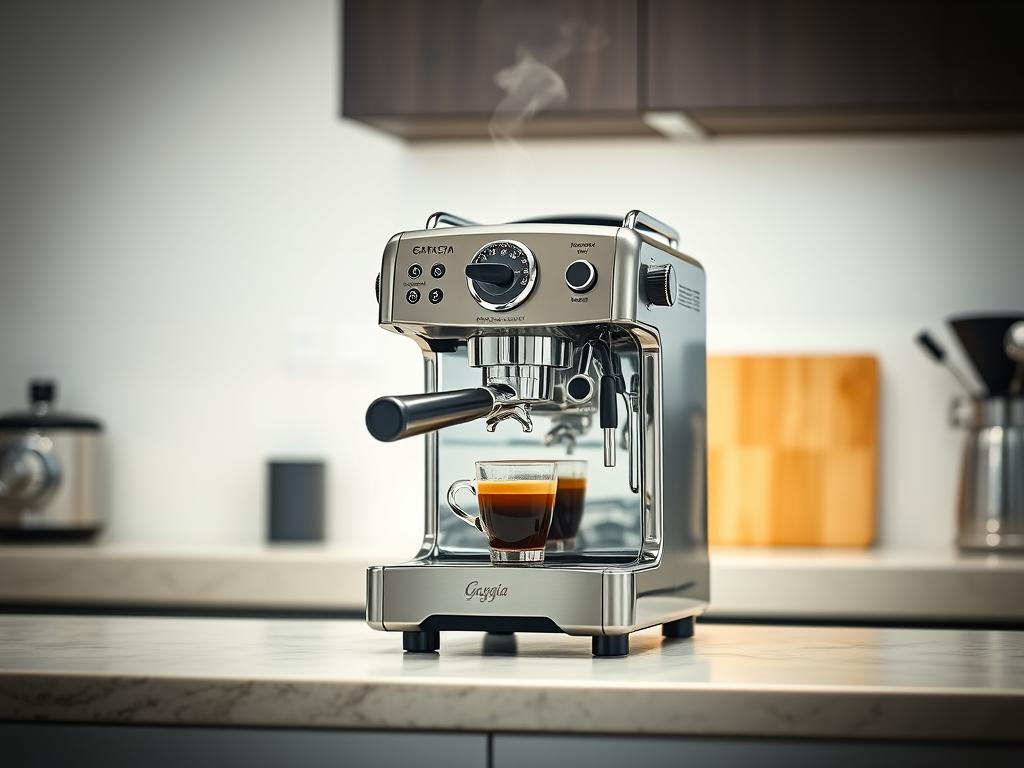
The Gaggia Classic Pro has earned its reputation as the entry point to serious espresso making. At around $449, it’s one of the most affordable ways to get a commercial-sized 58mm portafilter and a machine capable of producing exceptional espresso. The Italian-made Classic Pro features a robust build quality with a stainless steel housing that’s designed to last for years.
While it lacks some of the modern conveniences of pricier machines, the Classic Pro delivers where it matters most: shot quality. With the right grinder and technique, it can produce espresso with complex flavor profiles that rival much more expensive machines. The updated steam wand on the Pro model is a significant improvement over previous versions, though it still requires practice to master.
One drawback is the lack of PID temperature control, which means you’ll need to “temperature surf” to achieve consistent brewing temperatures. However, this machine responds well to modifications, and there’s a large community of enthusiasts who share tips and upgrades.
Pros
- Commercial 58mm portafilter
- Durable stainless steel construction
- Excellent shot quality for the price
- Highly modifiable with a strong user community
- Compact footprint
Cons
- No PID temperature control
- Learning curve for temperature management
- Basic plastic tamper included
- Limited steam power compared to higher-end models
Rancilio Silvia: Best for Enthusiasts
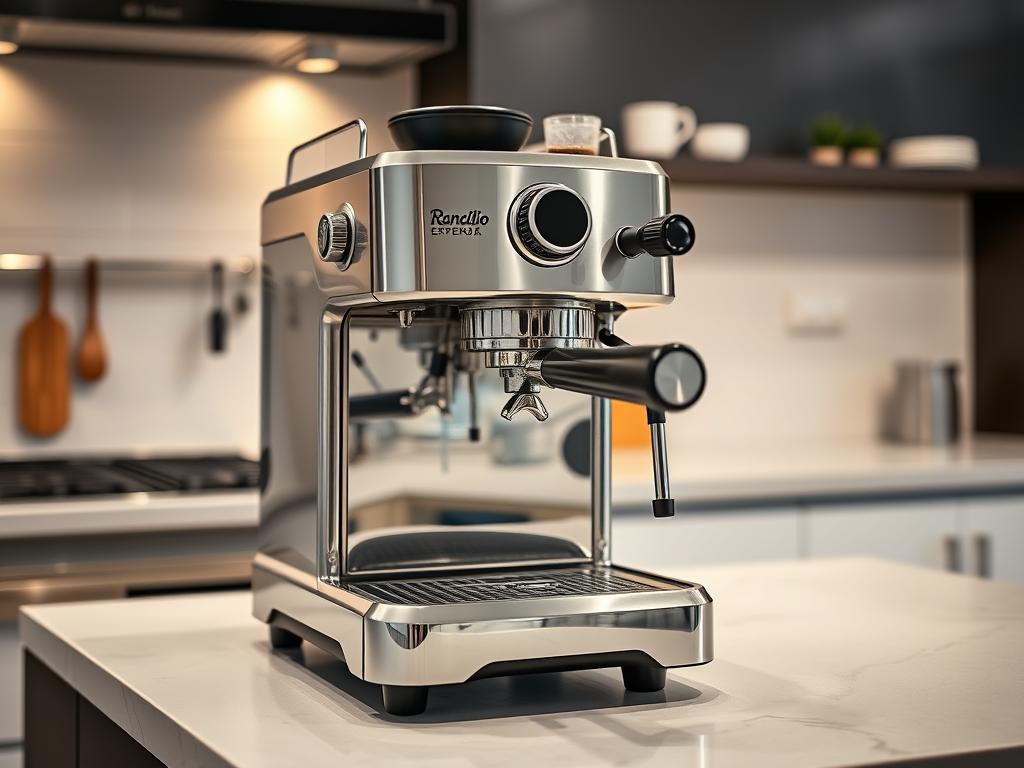
The Rancilio Silvia has been a staple in the home espresso world for over two decades, and for good reason. At around $795, it represents a step up from the Gaggia Classic Pro in terms of build quality and performance. The Silvia features a larger brass boiler, a powerful steam wand, and commercial-grade components throughout.
What sets the Silvia apart is its exceptional steam power, which rivals machines costing much more. The commercial-grade steam wand produces velvety microfoam that’s perfect for latte art. The machine’s robust construction and serviceable design mean it can last for many years with proper maintenance.
Like the Gaggia, the Silvia lacks PID temperature control in its standard form, requiring temperature surfing for consistent results. It also has a longer warm-up time of about 15-20 minutes. However, for those willing to invest the time to learn its quirks, the Silvia rewards with exceptional espresso and milk texture.
Pros
- Commercial-grade components
- Powerful steam wand
- Excellent build quality and durability
- Serviceable design for long-term ownership
- Consistent performance once mastered
Cons
- No PID temperature control (stock model)
- Longer warm-up time
- Steeper learning curve
- Higher price point in the category
Breville Barista Express: Best All-in-One Solution
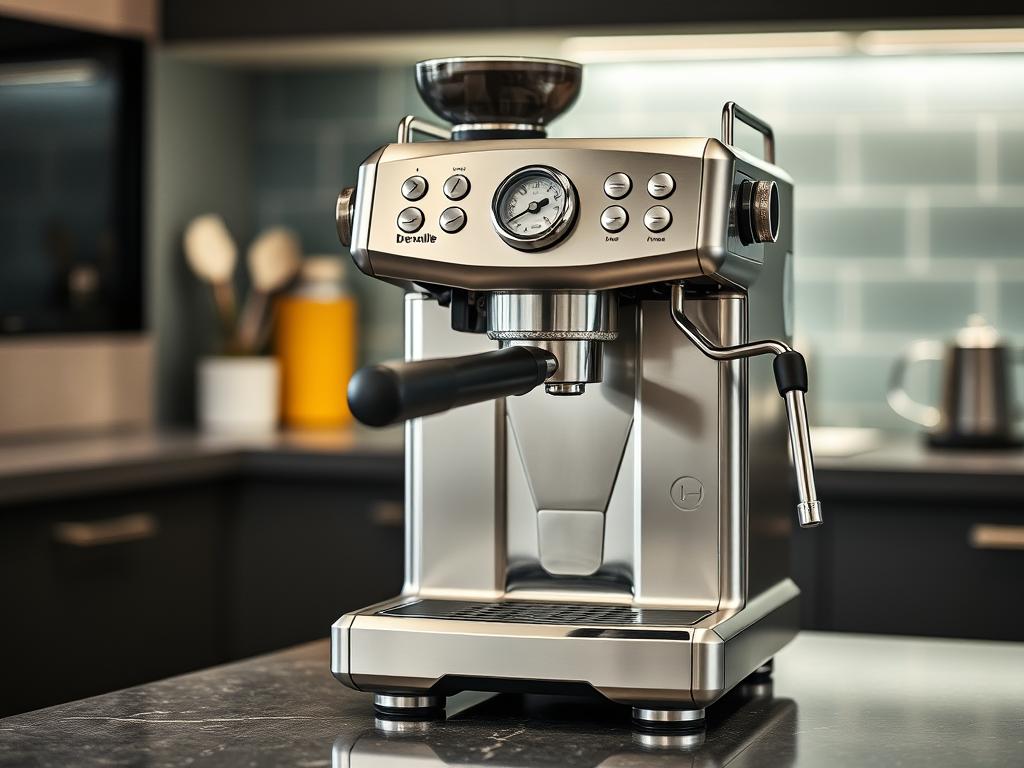
The Breville Barista Express offers exceptional value at around $699, combining a capable espresso machine with an integrated conical burr grinder. This all-in-one approach makes it ideal for those with limited counter space or those who want to minimize the initial investment while still getting everything needed for quality espresso.
The Barista Express features PID temperature control for consistent brewing, a pressure gauge to help dial in shots, and pre-infusion to ensure even extraction. The built-in grinder offers 16 grind settings, which is sufficient for most users, though not as precise as high-end standalone grinders.
While the steam wand isn’t as powerful as those on the Rancilio or higher-end Breville models, it’s capable of producing microfoam with practice. The machine heats up quickly and transitions between brewing and steaming with minimal wait time, making it practical for daily use.
Pros
- Built-in conical burr grinder
- PID temperature control
- Pressure gauge for shot feedback
- Pre-infusion function
- Quick heat-up time
Cons
- Limited grinder adjustability
- Moderate steam power
- Grinder can be messy
- Non-standard 54mm portafilter
Profitec Go: Best Premium Option Under $1000
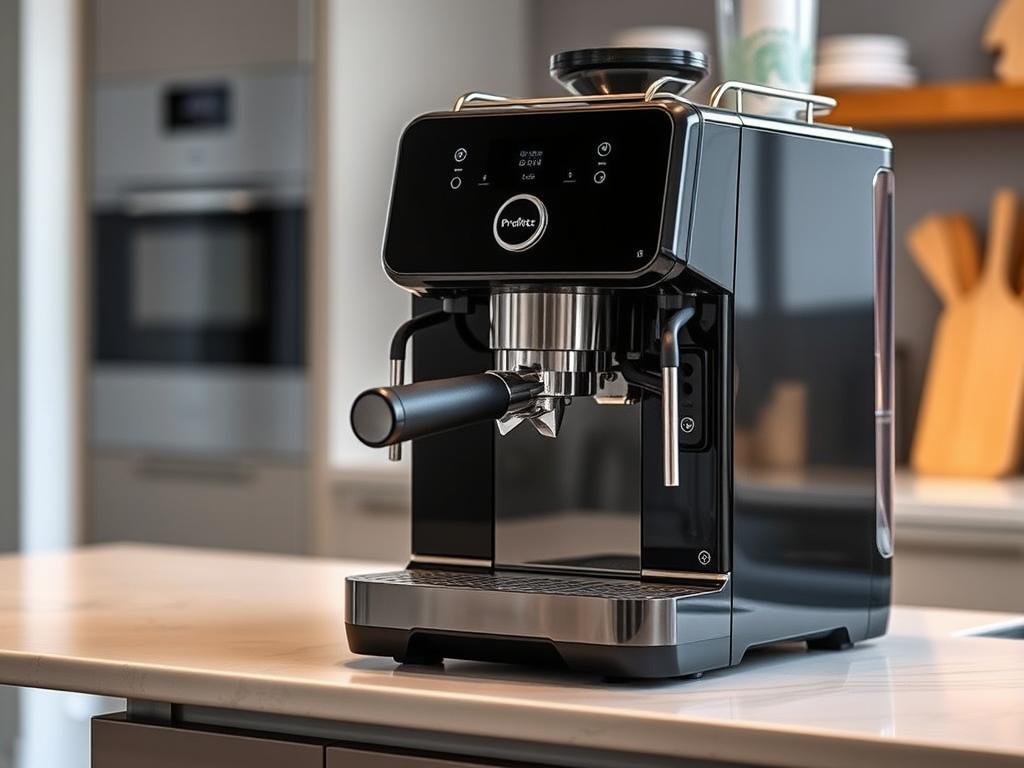
At the upper end of our price range at $999, the Profitec Go represents the entry point to prosumer-level espresso machines. German-engineered with exceptional build quality, the Go features a PID-controlled single boiler, a commercial 58mm portafilter, and an E61-inspired group head design that ensures temperature stability.
What sets the Profitec Go apart is its attention to detail and quality components. The machine feels substantial at around 30 pounds, with minimal plastic parts and a design focused on longevity. The PID controller allows for precise temperature adjustments, eliminating the need for temperature surfing found on other single-boiler machines.
The steam wand produces excellent microfoam, though you’ll need to wait briefly when switching between brewing and steaming. For those who prioritize shot quality and are willing to invest in the upper range of the budget, the Profitec Go delivers professional-level results that will satisfy even demanding espresso enthusiasts.
Pros
- PID temperature control
- Exceptional build quality
- Commercial 58mm portafilter
- Excellent temperature stability
- Professional-level results
Cons
- At the top of the budget range
- Heavier and larger footprint
- Wait time between brewing and steaming
- No built-in grinder
Flair 58: Best Manual Option
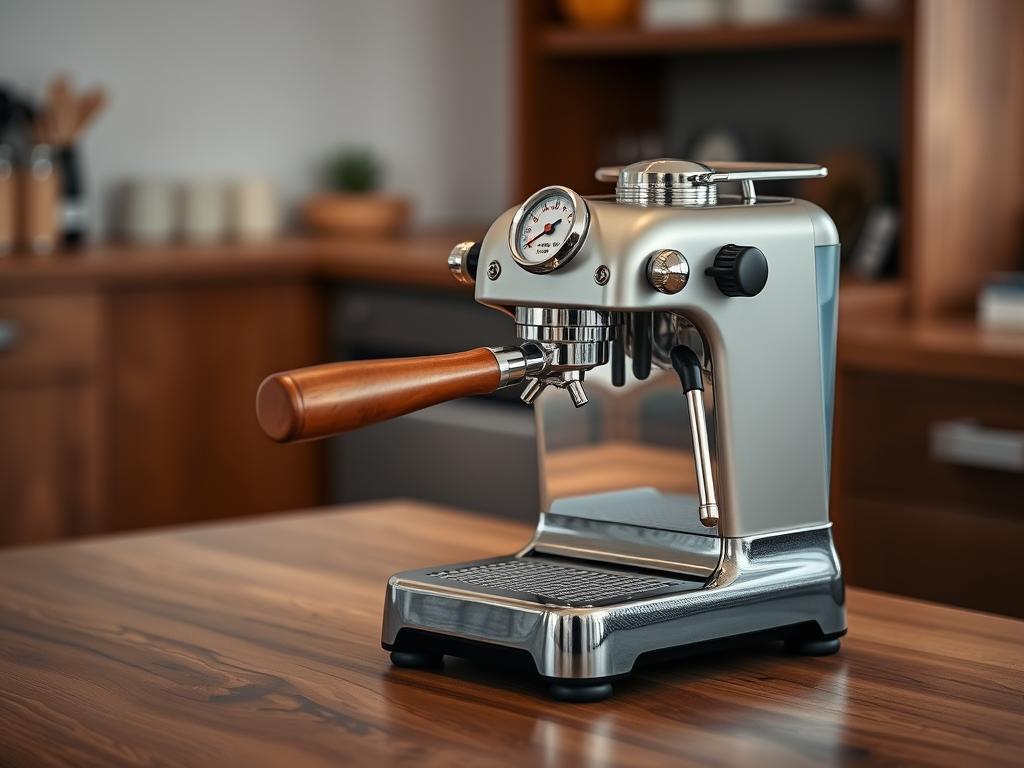
For those interested in a different approach to espresso, the Flair 58 offers a compelling manual lever experience at around $575. Unlike traditional pump machines, the Flair 58 relies on manual pressure applied through a lever, giving you complete control over the extraction process.
The Flair 58 stands out with its heated brew chamber (a significant upgrade from previous Flair models), professional 58mm portafilter compatibility, and built-in pressure gauge. The heated chamber maintains proper brewing temperature throughout the extraction, addressing a common limitation of manual machines.
While the Flair doesn’t offer milk steaming capabilities, it excels at producing exceptional espresso shots with a level of control that even expensive automatic machines can’t match. For pure espresso enthusiasts or those who use separate milk frothers, the Flair 58 provides an engaging brewing experience and outstanding results at a fraction of the cost of traditional machines.
Pros
- Complete control over extraction pressure
- Heated brew chamber
- Professional 58mm portafilter compatibility
- Excellent espresso quality
- No pump or electronics to fail
Cons
- No milk steaming capability
- Requires separate kettle for water
- More involved workflow
- Learning curve for consistent results
The Importance of a Quality Grinder
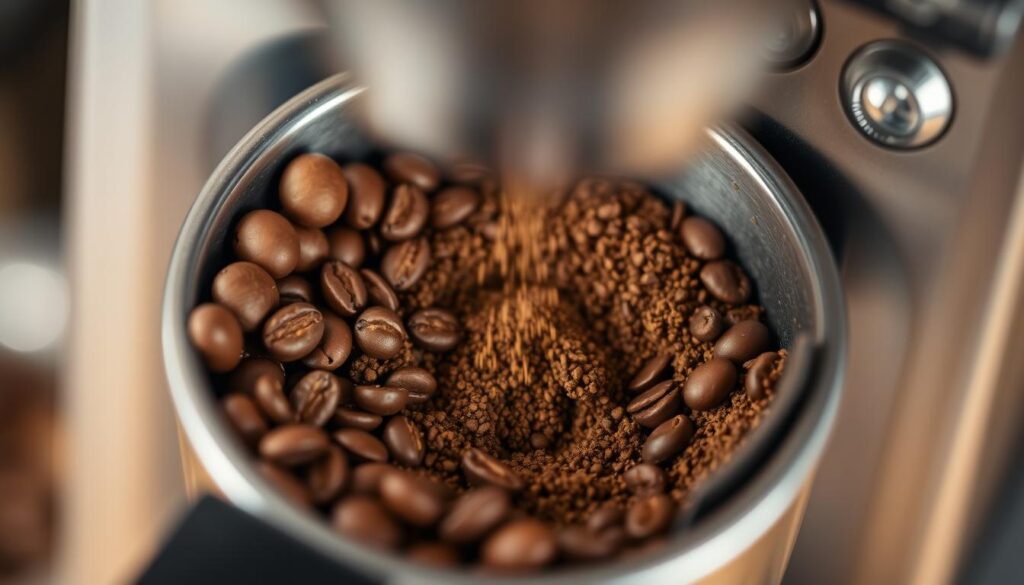
When budgeting for an espresso machine under $1000, it’s crucial to consider the grinder as an essential companion. Even the best espresso machine will produce mediocre results with an inadequate grinder. Here’s why a quality grinder matters:
Why Grinder Quality Matters
- Extraction Control: Grind size directly affects extraction rate. Too coarse and your espresso will be under-extracted (sour); too fine and it will be over-extracted (bitter).
- Consistency: Quality burr grinders produce uniform particle sizes, leading to even extraction and balanced flavor.
- Adjustability: Espresso requires fine adjustments to dial in the perfect shot. Good grinders offer precise, stepless or micro-stepped adjustment.
- Freshness: Pre-ground coffee quickly loses aromatics and flavors. Grinding fresh before each shot is essential for quality espresso.
Recommended Grinders
If your espresso machine doesn’t include a built-in grinder, consider these options that pair well with machines under $1000:
- Baratza Sette 270: Around $400, offers 270 grind settings and is designed specifically for espresso.
- Eureka Mignon Specialita: Around $679, features stepless adjustment and quiet operation.
- Baratza Encore ESP: Around $199, an entry-level option that can handle espresso with its updated ESP burrs.
- 1Zpresso JX-Pro: Around $169, a manual grinder that delivers excellent espresso grounds for those on a tight budget.
Pro Tip: If you’re on a tight budget, it’s often better to pair a more modest espresso machine with an excellent grinder than vice versa. Consider allocating about 30-40% of your total budget to the grinder for the best overall results.
Maintaining Your Espresso Machine
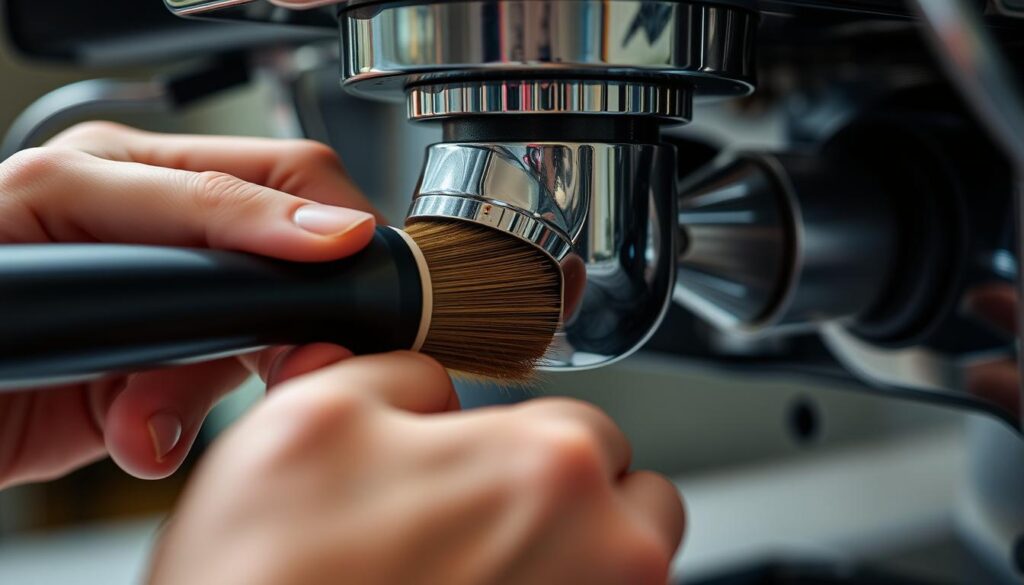
Proper maintenance is essential for ensuring your espresso machine’s longevity and consistent performance. Here are key maintenance practices to follow:
Daily Maintenance
- Backflush: For machines with a three-way solenoid valve, perform a water backflush after each session to clear coffee oils from the group head.
- Wipe the Steam Wand: Immediately after use, wipe the steam wand with a damp cloth and purge it to prevent milk buildup.
- Empty the Drip Tray: Regularly empty and rinse the drip tray to prevent mold and bacteria growth.
- Clean the Portafilter: Rinse the portafilter and basket with hot water after each use to remove coffee oils.
Weekly Maintenance
- Chemical Backflush: For machines with a three-way solenoid valve, perform a chemical backflush using espresso machine cleaner once a week.
- Soak Portafilter and Basket: Soak these components in espresso machine cleaner to remove coffee oils and residue.
- Clean the Group Gasket: Use a group head brush to clean around the gasket and shower screen.
- Wipe Exterior: Clean the exterior with a soft, damp cloth to remove fingerprints and coffee splatter.
Monthly Maintenance
- Descale: Depending on your water hardness, descale every 1-3 months to remove mineral buildup.
- Remove and Clean Shower Screen: Unscrew and thoroughly clean the shower screen to ensure even water distribution.
- Check Water Filter: If your machine uses a water filter, check if it needs replacement.
Important: Always refer to your specific machine’s manual for maintenance instructions, as procedures can vary between models. Using filtered water can significantly reduce the frequency of descaling needed.
Frequently Asked Questions About Best Espresso Machines Under $1000
Can you get commercial-grade espresso from a machine under $1000?
Yes, several machines under $1000 can produce commercial-quality espresso, especially models like the Rancilio Silvia and Profitec Go that use commercial-grade components. The key difference is typically in workflow efficiency and consistency over high-volume use, not necessarily in the quality of a single shot. With proper technique and a good grinder, home machines in this price range can produce espresso that rivals or even exceeds what you’d get at many cafés.
Do I need a machine with a built-in grinder?
Not necessarily. While machines with built-in grinders like the Breville Barista Express offer convenience and space savings, separate components often provide better results. Built-in grinders typically have fewer adjustment options and may not grind as consistently as dedicated espresso grinders. If space and budget allow, pairing a machine without a grinder with a quality standalone grinder usually yields superior results and more flexibility for upgrading either component in the future.
What’s the difference between single boiler and thermoblock systems?
Single boiler systems heat a volume of water in a boiler for both brewing and steaming, requiring temperature changes between functions. They typically provide more stable brewing temperatures and stronger steam but require waiting time between brewing and steaming. Thermoblock systems heat water on demand as it flows through a heated element, offering faster startup times and quicker transitions between brewing and steaming. Single boilers often produce better temperature stability for brewing, while thermoblocks offer more convenience for daily use.
Is PID temperature control worth the extra cost?
For most users, yes. PID (Proportional-Integral-Derivative) controllers maintain more precise and stable brewing temperatures than traditional thermostats. This consistency translates to more predictable extractions and better-tasting espresso. Machines with PID control eliminate the need for temperature surfing techniques required on machines with traditional thermostats. If you’re serious about espresso quality and consistency, a machine with PID control is generally worth the investment.
How important is the portafilter size?
Portafilter size affects both extraction quality and compatibility with accessories. Commercial 58mm portafilters (found on machines like the Gaggia Classic Pro and Rancilio Silvia) generally provide more even extraction due to their wider, thinner coffee bed. They’re also compatible with a wider range of aftermarket baskets, tampers, and distribution tools. Smaller portafilters (like Breville’s 54mm) can still produce excellent espresso but offer fewer accessory options and may require more careful distribution techniques.
How long should an espresso machine in this price range last?
With proper maintenance, most espresso machines under $1000 should last 7-10 years or more. Italian-made machines like the Rancilio Silvia and Gaggia Classic Pro are known for their longevity, with many users reporting 15+ years of service. These machines are also designed to be serviceable, with readily available replacement parts. Breville machines typically have a shorter lifespan of 5-8 years but offer more features for the price. Regular maintenance, including descaling and backflushing, significantly extends any machine’s lifespan.
Essential Accessories for Your Espresso Machine
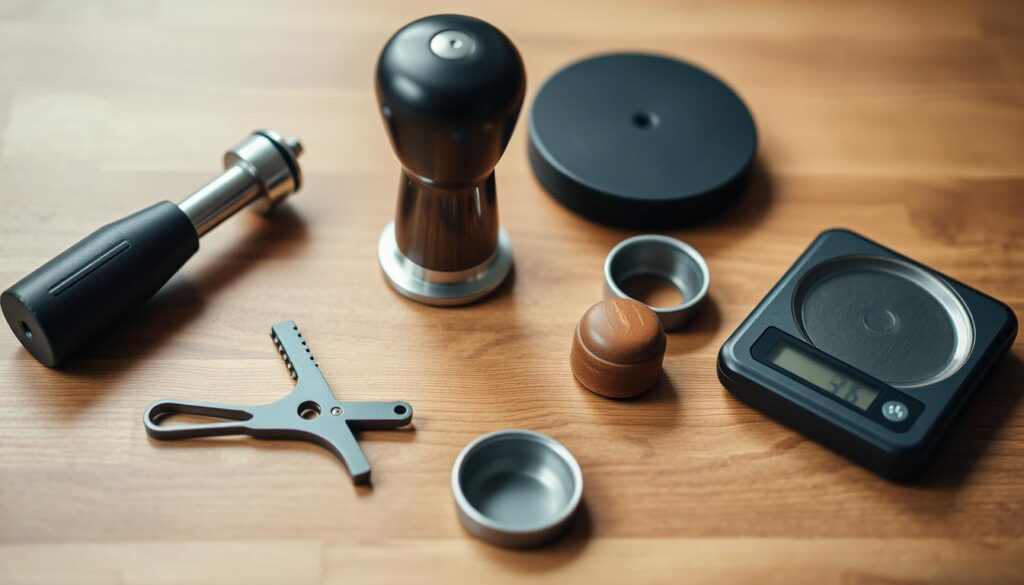
To get the most from your espresso machine under $1000, consider these essential accessories that will elevate your brewing experience:
Precision Tamper
Most machines come with basic plastic tampers that don’t provide even pressure. Invest in a precision-machined tamper that fits your portafilter exactly (58mm, 54mm, etc.). Look for models with ergonomic handles and sufficient weight (around 1lb) for consistent tamping pressure.
Recommended: Normcore V4 Calibrated Tamper ($45-65)
Digital Scale
Consistent dosing is crucial for repeatable results. A scale with 0.1g precision allows you to measure both your coffee dose and shot output. Look for compact models with fast response times and tare functionality.
Recommended: Timemore Black Mirror Basic ($55-70)
Knock Box
A knock box provides a convenient place to dispose of used coffee pucks. This simple accessory makes cleanup easier and protects your trash can or sink from coffee grounds.
Recommended: Breville Knock Box Mini ($30)
Milk Pitcher
A quality stainless steel milk pitcher improves your steaming results. Look for pitchers with a pointed spout for latte art and capacity appropriate for your typical drinks (12-20oz).
Recommended: Rattleware 20oz Latte Art Pitcher ($25-30)
Distribution Tool
A distribution tool helps evenly distribute grounds in the portafilter before tamping, reducing channeling and improving extraction consistency.
Recommended: Crema Coffee Products Distribution Tool ($40-50)
Cleaning Supplies
Regular cleaning extends machine life and ensures consistent flavor. Essential supplies include backflush detergent, descaling solution, and a group head brush.
Recommended: Cafiza Cleaning Powder and Dezcal Descaler ($15-25)
Budget Tip: If you’re on a tight budget after purchasing your machine, prioritize a quality tamper and scale first. These two accessories have the most direct impact on shot quality. You can add other accessories over time as your budget allows.
Mastering Milk Steaming
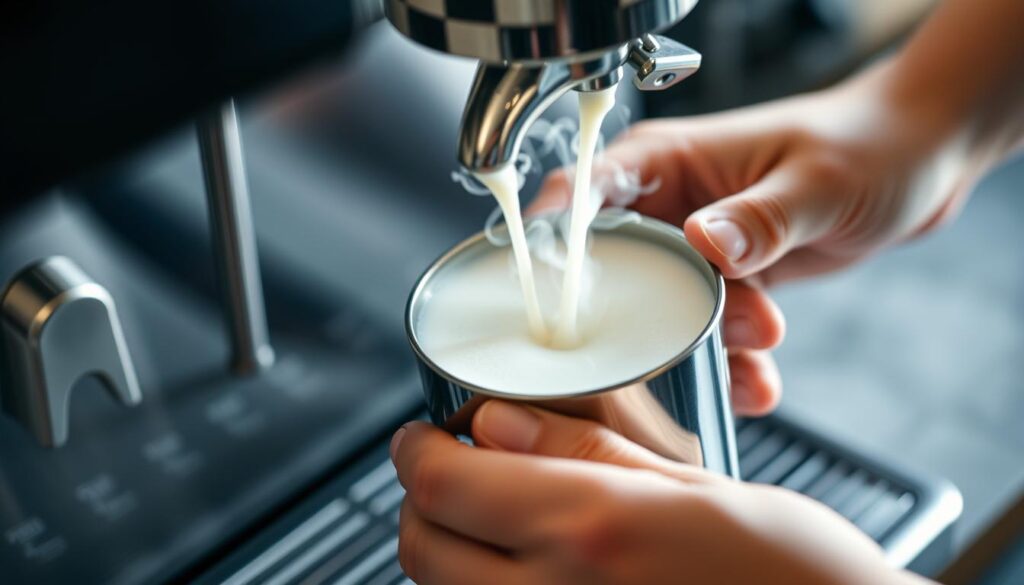
Creating silky microfoam is an art that takes practice, but it’s essential for delicious lattes and cappuccinos. Here’s a quick guide to mastering milk steaming with your new espresso machine:
Basic Steaming Technique
- Start with cold milk in a chilled pitcher, filled to about 1/3 capacity (milk will expand).
- Purge the steam wand briefly to remove any condensation.
- Position the wand tip just below the milk surface at a slight angle near the pitcher’s edge.
- Turn on steam at full power and immediately lower the pitcher to create a “tearing” sound as air is incorporated.
- After 3-5 seconds (less for lattes, more for cappuccinos), submerge the wand deeper and position it to create a whirlpool effect.
- Continue steaming until the pitcher becomes too hot to touch comfortably (around 150°F/65°C).
- Turn off steam before removing the wand from the milk to avoid splattering.
- Wipe and purge the steam wand immediately after use.
Common Steaming Issues
Too Many Large Bubbles
- You’re introducing too much air or for too long
- The steam wand is positioned incorrectly
- The steam pressure is too low
Milk Gets Too Hot
- You’re steaming for too long
- Use a thermometer until you develop a feel for the right temperature
Not Enough Foam
- You’re not introducing enough air at the beginning
- The milk is already too warm when you start
- You’re submerging the wand too deeply too quickly
Inconsistent Results
- Practice the same technique repeatedly
- Use the same amount of milk each time
- Consider marking your pitcher for consistent filling
Milk Type Matters: Whole milk is easiest to steam and produces the richest microfoam. For non-dairy alternatives, oat milk (barista versions) typically performs best, followed by soy milk. Almond and coconut milks are more challenging to steam properly.
Recommendations Based on Your Needs
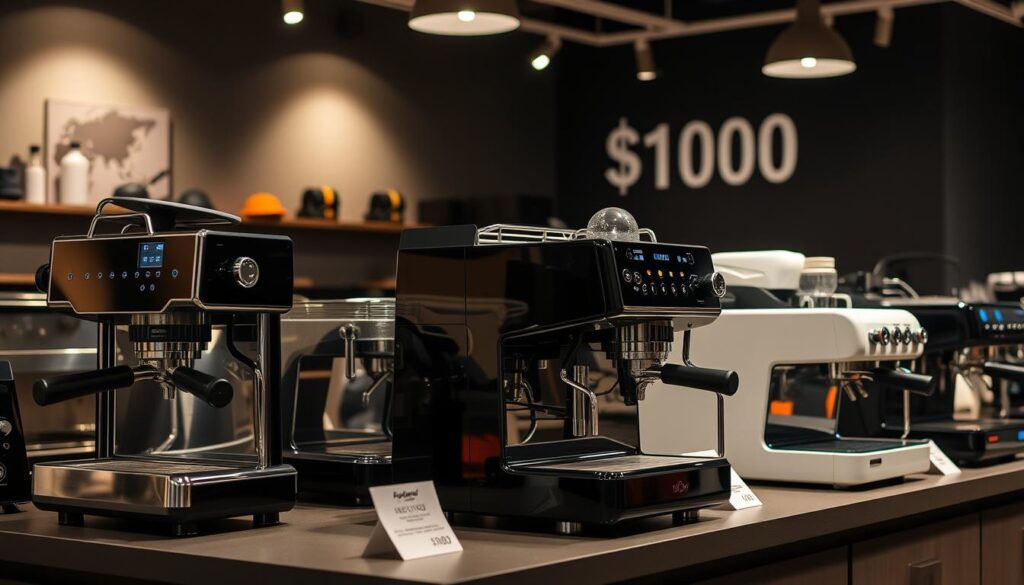
With so many excellent options under $1000, choosing the right espresso machine depends on your specific needs and preferences. Here are our recommendations for different types of users:
- Best Choice: Breville Bambino Plus
- Automatic milk texturing simplifies the learning curve
- Quick heat-up time means less waiting
- Pressurized baskets help achieve decent results while learning
- Compact size works well in smaller kitchens
- Leaves budget for a decent grinder
For Beginners
- Best Choice: Rancilio Silvia or Profitec Go
- Commercial components provide professional results
- Better temperature stability for consistent shots
- Powerful steam for excellent microfoam
- Durable construction for years of service
- Upgradeable with modifications
For Enthusiasts
- Best Choice: Breville Barista Express
- All-in-one solution with built-in grinder
- PID temperature control for consistency
- Pressure gauge helps dial in shots
- Quick heat-up and transition times
- Compact footprint saves counter space
For Convenience
Best Value Combinations
If you’re starting from scratch and need both a machine and grinder within the $1000 budget, consider these combinations:
Option 1: Quality Machine + Entry Grinder
- Gaggia Classic Pro ($449) + Baratza Encore ESP ($199)
- Total: ~$650
- Great for those who prioritize machine quality and can upgrade the grinder later
Option 2: Balanced Quality
- Breville Bambino Plus ($499) + 1Zpresso JX-Pro ($169)
- Total: ~$670
- Excellent machine paired with a high-quality manual grinder
Ready to Elevate Your Home Coffee Experience?
Investing in a quality espresso machine under $1000 is a game-changer for coffee lovers. Whether you choose the user-friendly Breville Bambino Plus, the classic Gaggia Classic Pro, or another model from our recommendations, you’re on your way to café-quality espresso at home.
Final Thoughts: Finding Your Perfect Espresso Machine Under $1000
The best espresso machine under $1000 is ultimately the one that fits your specific needs, preferences, and brewing style. This price range offers an impressive selection of machines capable of producing café-quality espresso at home, from user-friendly models with automatic features to more traditional machines that reward technique and practice.
Remember that the espresso machine is just one part of the equation—a quality grinder, fresh beans, proper technique, and regular maintenance all contribute to exceptional results. By considering your priorities and understanding the strengths of each machine type, you can make an informed decision that will bring years of espresso enjoyment to your home.
Whether you’re just beginning your espresso journey or looking to upgrade from a basic machine, the options in this guide represent the best balance of quality, performance, and value available today. Happy brewing!

